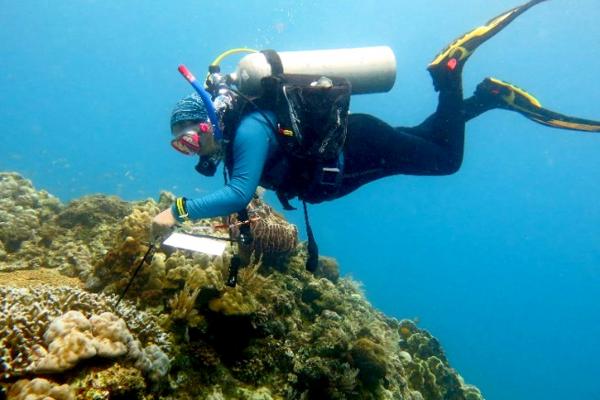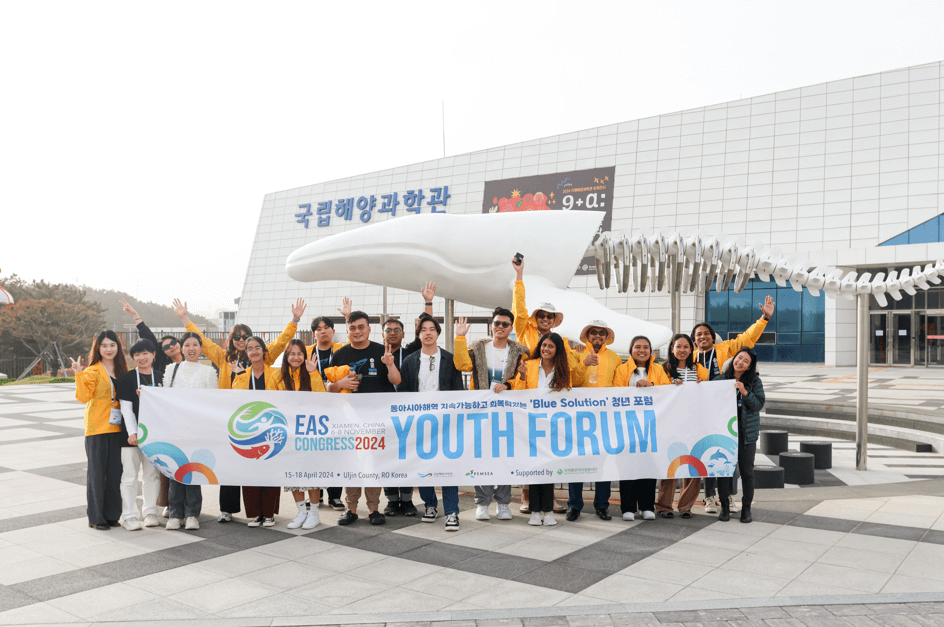ICM as a platform for oil spill contingency planning at the local level
Monday, 13 March 2023

Assessment of marine habitat. (Photo by PGOM-PAGO)
Oriental Mindoro, a coastal province in the Philippines, harbors critical nearshore habitats, such as coral reefs, mangroves and seagrass beds. These habitats serve not only as reservoirs of biodiversity, but provide a major source of livelihood for the coastal communities of the province. The sustainable health of these habitats is thus interwoven into the long-term well-being of the province.
Oriental Mindoro has been implementing Integrated Coastal Management (ICM) for almost two decades. In 2004, the province adopted a Coastal Marine and Inland Water Resources Management Code, as mandated by Provincial Ordinance 004 Series of 2004, that provides guidelines for the sustainable use of the coastal and fisheries resources. In addition, the Integrated Coastal Area Management Plan (ICAMP) of the province covering 2010-2015 and 2016-2020 were adopted as frameworks for the integrated management of the land and sea based on the “ridge to reef” approach.
ICM has provided an holistic framework along with a step-wise and iterative process that has allowed the local government to strengthen its governance mechanisms (i.e., enhanced coordination in strategic and operational planning, law enforcement, capacity development, knowledge management, etc.) and the implementation of management programs that addresses priority concerns related to climate change, biodiversity conservation, pollution management, water use management and fisheries and sustainable livelihood.

PEMSEA conducted IIMS training in Oriental Mindoro (Photo by PEMSEA/D. Padayao)
In view of the province’s strategic location along the Verde Island Passage (VIP), considered the global center of marine shorefish biodiversity, Oriental Mindoro’s ICM program focuses on biodiversity conservation, climate resilience, and sustaining the livelihood of coastal communities where fishing is the main source of food and livelihood. The overarching framework provided by ICM has been used by the province to make evidence-based decisions concerning the establishment of locally-managed marine protected areas (MPAs). To date, the province has established 40 MPAs since 2003, covering 8,073 hectares of critical habitats. These are continuously managed, helping to ensure the conservation and sustainable use of coastal and marine resources and space.
The establishment and expansion of MPAs is one of the priority programs of the Fisheries and Coastal Resource Management Division of the Provincial Agriculture Office, which coordinates the ICM program of the province. The province has been a consistent recipient of recognition awards for the best managed MPAs under the biennial Para El Mar MPA Awards, a national competition for best locally managed MPAs and MPA networks in the country. In 2017, Agsalin Fish Sanctuary in Gloria Municipality won 1st place while in 2019, Ranzo Fish Sanctuary in Pinamalayan Municipality placed 3rd. In 2021, St. John the Baptist Marine Sanctuary in Pola Municipality landed 5th in the top 10 Outstanding MPAs of the Philippines at the Para El Mar Awards. In 2021, the province recognized the top performing local MPAs and Bantay Dagat Teams from the different municipalities of the province through the Sustaining Marine Protected Areas Awards and Recognition (STAR) MPA Awards.

Life underwater of Oriental Mindoro. (Photo by PGOM-PAGO)
The MPAs and municipalities identified above are affected by the oil spill incident involving MT Princess Empress. This incident is a major ecological disaster, affecting crucial coastal habitats and threatening the loss of livelihood of 18,000 fishermen. The provincial government has declared all coastal barangays in 9 municipalities (i.e., Naujan, Pola, Pinamalayan, Gloria, Bansud, Bongabong, Roxas, Mansalay and Bulalacao) to be under a state of calamity.
While oil spills from land- and sea-based sources were identified as a priority threat to the 13 coastal LGUs of the province during a scoping activity conducted in 2014, and the ICAMP has mainstreamed climate change adaptation and disaster risk reduction measures in coastal management planning, specific actions related to oil spills are not explicitly covered in the existing plans, including the State of the Coasts Report of Oriental Mindoro.
The opportunity to revisit the existing plans and/or recommend the formulation of an oil spill contingency plan (OSCP) for the province or a VIP-wide OSCP is critical. The necessary mechanisms under the ICM program to facilitate and mainstream the OSCP process in Oriental Mindoro are in place, such as the presence of multi-sector, inter-agency coordinating mechanism (OrMin Law Enforcement and MPA Network); strategic plan (ICAMP); sectoral plans (LCCAPs, MPA management plans, etc.); OrMin Resource Monitoring Team; and partnerships with NGOs and the private sector.
The incident occurring in Oriental Mindoro is not a unique threat. Over 80% (66 out of 81 provinces) of the Philippine’s provinces are coastal. Critical coastal and marine habitats often lie along navigational lanes for water vessels, meaning oil spills are an ever-present danger. ICM calls for the documentation and dissemination of good practices. The oil spill incident provides the opportunity for the application of OSCP at the local level; document the experience and good practices and replicate and scale up these good practices to help local governments address the imminent threats of oil spills.
References:
- https://www.philstar.com/headlines/2023/03/04/2249267/36000-hectares-coral-reefs-mangroves-possibly-affected-mindoro-oil-spill
- https://www.philstar.com/headlines/2023/03/08/2250158/oriental-mindoro-oil-spill-leaves-fishers-short-cash-and-food
- https://newsinfo.inquirer.net/1739197/oil-spill-puts-8-more-towns-in-oriental-mindoro-in-calamity-state
- https://www.malampayafoundation.org/news/pola-marine-sanctuary-lands-in-the-top-10-of-para-el-mar-national-awards
- http://orminagri.com/pgom-star-mpa-awards



